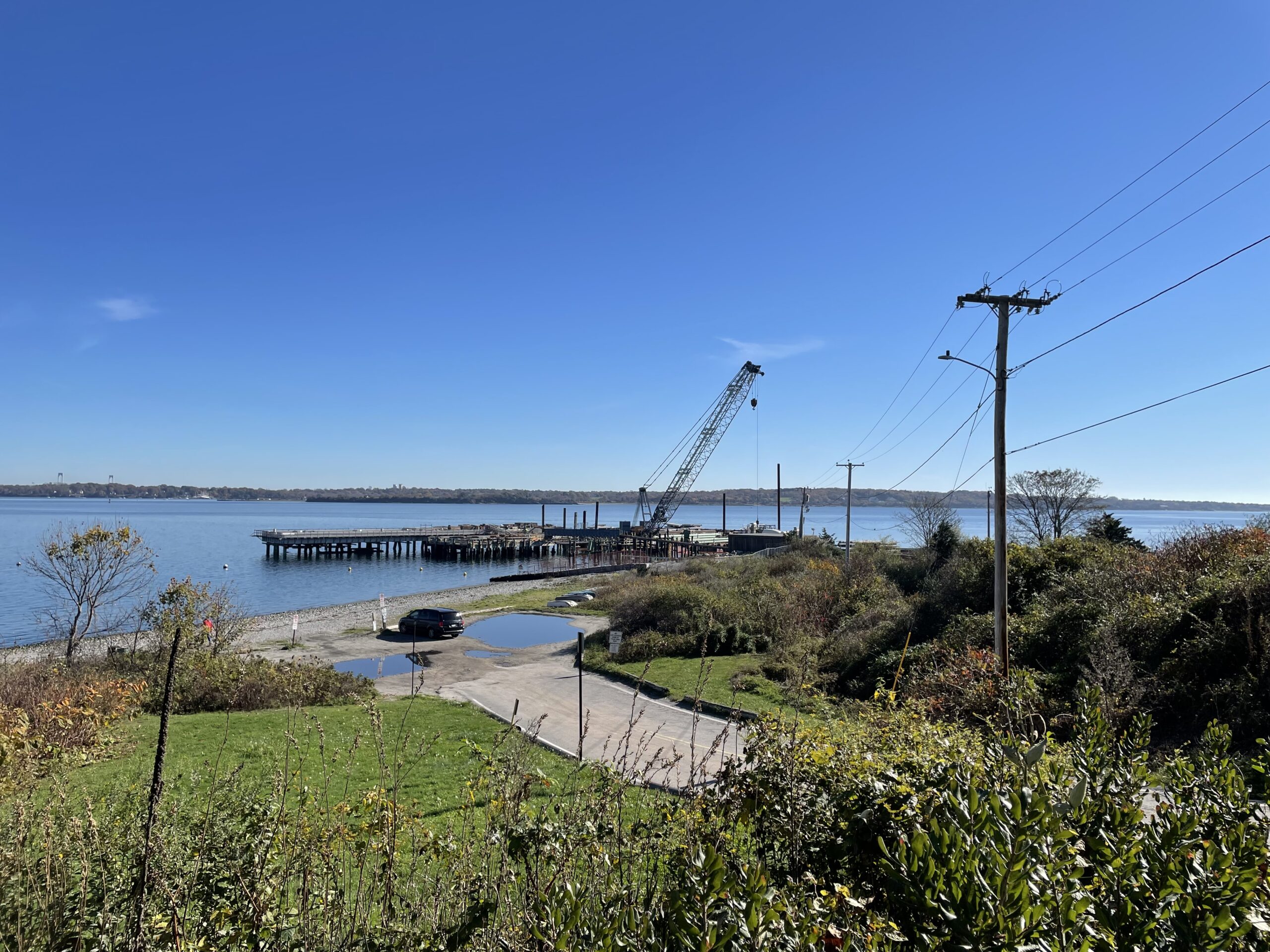Voter-approved improvements at URI Bay Campus begin
By Cynthia Drummond / ecoRI News
contributor
On a recent morning, Paula Bontempi, dean of the University of
Rhode Island Graduate School of Oceanography, stood watching the construction
of a new pier, one of the projects in Phase 1 of the campus upgrades, which is
funded by a $45 million bond passed in 2018.
“It had three components,” Bontempi said. “The pier itself, the
marine operations building, in support of our new ship that will be arriving,
and then, the ocean robotics laboratory.”
The most dramatic transformations, however, are still to come.
On Nov. 8, voters approved a $100 million bond to fund Phase 2 of the campus
upgrades, and Bontempi said she was grateful to Rhode Islanders for their
support.
“This support will allow us to grow the Ocean State’s blue economy and lead the nation in developing an ocean workforce that will benefit all of Rhode Island’s cities and towns,” she said.
The larger pier and a new operations building, both Phase 1
projects, are necessary to accommodate the Narragansett Dawn, the new research
vessel that will replace Endeavor.
“We are contractually obligated with the National Science
Foundation to deliver that to support the new ship, with our partners,” the
Woods Hole Oceanographic Institution and the University of New Hampshire School
of Marine Science and Ocean Engineering, Bontempi said.
Dave Palazzetti, the director of facilities and operations at
URI’s oceanography school, said the longer pier will accommodate the 200-foot,
regional class research vessel and support a new seawater pumping station, which
will replace the existing station, soon to be underwater because of sea-level
rise.
“It’s also a support facility for our shore-based facilities,
more specifically, seawater,” he said. “… we have the sea intakes on the pier,
those come inland through the abutment.”
The new pier, several feet higher and built to withstand severe
weather, is considerably more robust than its predecessor, which was destroyed
by Superstorm Sandy.
“The storm surge lifted the entire pier off of its piles and put
it back down and it was completely destroyed, and we had to rebuild the entire
top,” Palazzetti said. “The new pier, five feet higher, steel, concrete, it’ll
last 50 years, with the expectation of a five-foot sea-level rise. So, we’re
building for resilience.”
Construction of the pier began during summer 2021 and is expected to be completed by this spring. Palazzetti said the pandemic delayed the project by several months.
“The steel piles that came out of Colorado were delayed, set us
back by about two months, and the pumps for the seawater were also delayed by
about two months, and those are major components of the project, so that
shifted the whole schedule,” he said.
The recently approved bond for the second phase of upgrades will
fund the construction of the College of Engineering’s Department of Ocean
Engineering complex on the bay campus, as well as the College of Environment
and Life Sciences, which has some facilities, including aquaculture, on the
campus.
“This is where we come up with new technologies and new test
facilities for things like wind turbines, wave tanks to look at the impact of
sea-level rise on the city of Providence,” Bontempi said. “It’s a nice partnership
between ocean engineering and oceanography, because you need the scientists and
the engineers to surmount some of these problems that are climate-driven.”
One of the most ambitious projects is the replacement of the
Horn Laboratory.
“That has been here since the ‘60s,” Bontempi said. “It is
completely and totally original and literally crumbling apart … It’s got a roof
that leaks, the water pours into the laboratories that need to be completely
clean, the elevator generally doesn’t work. It’s just horrific inside.”
The Horn Laboratory will be replaced by the Ocean Frontiers
Building, which will house laboratories, fabrication space, and offices.
“It’ll be in a different orientation, so it actually faces the
water instead of facing the quad, which is a really nice recruitment tool for a
lot of our faculty,” Bontempi said.
Another new facility, the Ocean Engineering Education and
Research Complex, will house wave and tow tanks and an acoustics tank. The new
buildings will replace metal structures that have been used for 70 years.
The Marine Geological Samples Laboratory will more than double
in size, adding needed storage space to the sample repository, which is funded
by the National Science Foundation. The Coastal Institute will also be
renovated and upgraded.
The Graduate School of Oceanography may be located in the
smallest state, but it enjoys a global reputation that attracts students,
researchers, and research dollars: more than $30 million in the first quarter
of 2022 alone, a significant increase over previous years.
“I think we did just over $30 million for the year, two or three
years ago,” Bontempi said, noting that competition between research
institutions is fierce. “If I’m competing with MIT, Woods Hole, Scripps, and
I’m showing top students the facilities they’ll be working in, you think that
they’d come here? It’s not just salary, and in spite of all that, we still do
this phenomenal job in our research and education for the state.”
